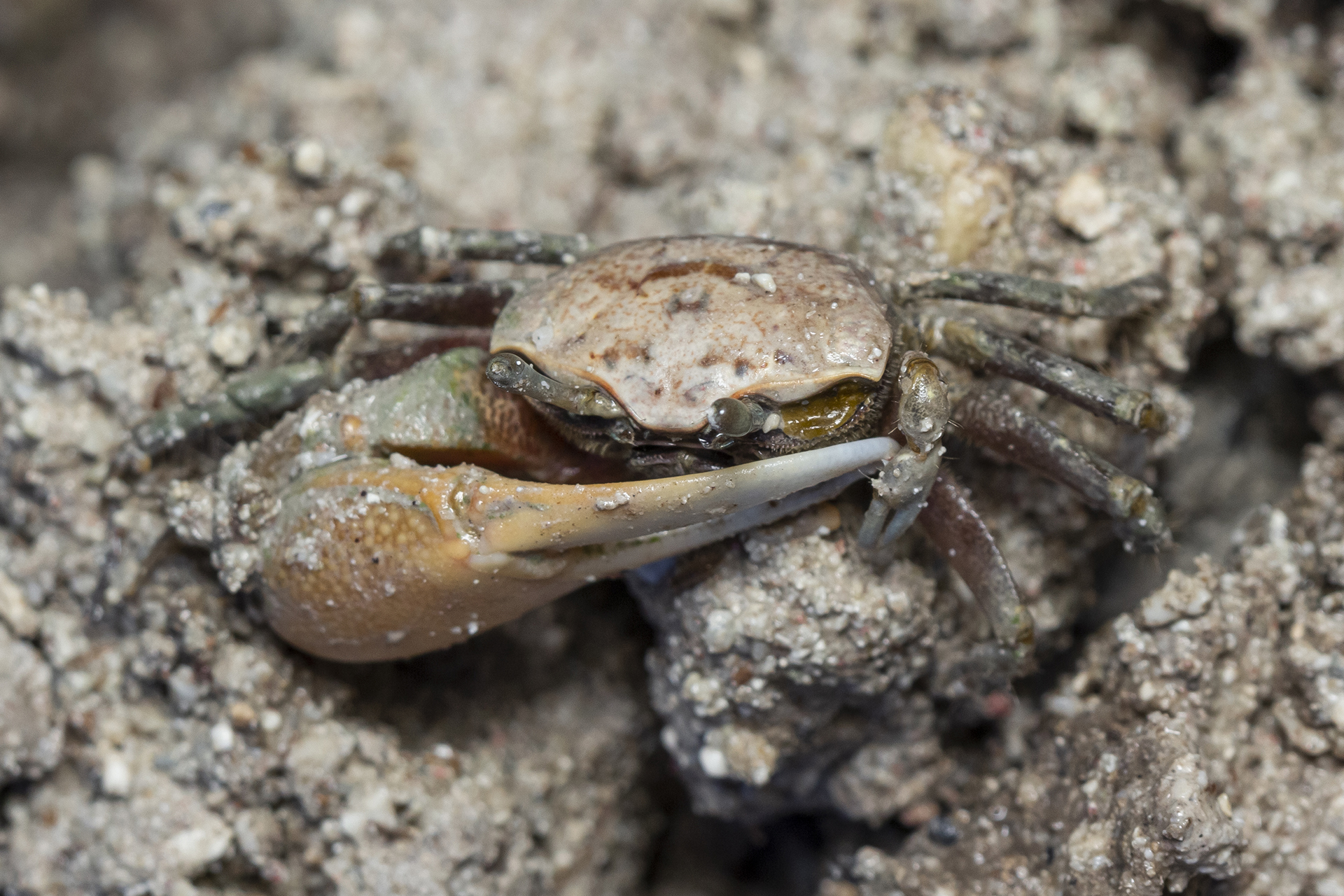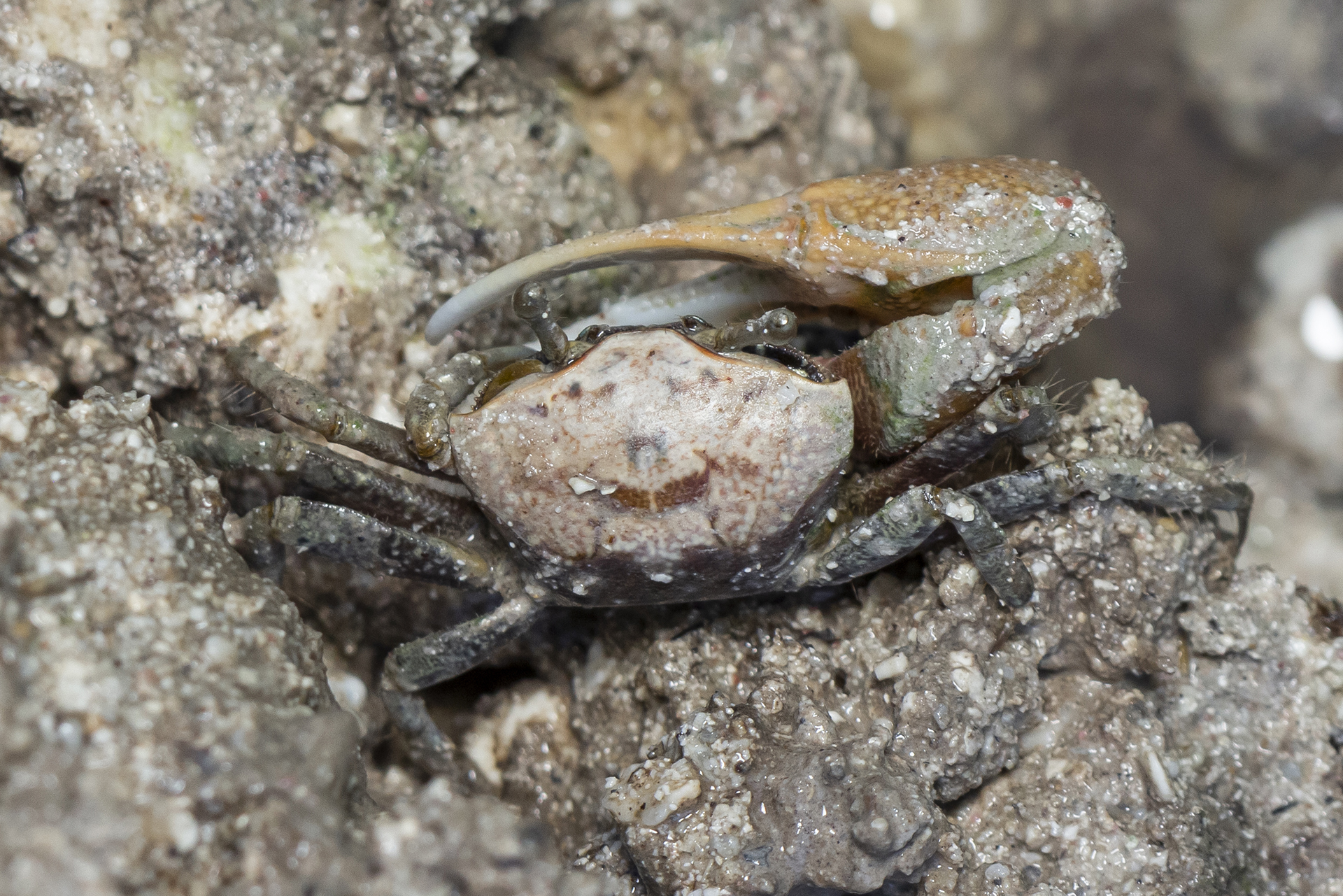
Mudflat Fiddler Crab
Uca rapax





Mudflat Fiddler Crab
Uca rapax
These crabs are found most often in soft sand or mudflats, near salt marshes. They will feed on algae, bacteria, fungus and detritus (dead and decaying plant and animal matter). The male has one large and one small claw, but the size of the female claws are equal. The male uses this enlarged claw in an unusual mating ritual during which he positions himself beside a small burrow that he has dug, and moves the claw back and forth (in a fiddling motion) to attract a female. If a female comes close by, the male will then tap the ground with his claw. If receptive, the female will then enter the burrow where they will mate. The mudflat fiddler crab Uca rapax is considered dimorphic since the males have a
large claw on one side of the body (Fig. 1) and the females have two small claws. Males are also
larger in body size: in Brazil, the carapace width at maturity was 13-15mm in males and 11-
12mm in females
Order: Decapoda (Crabs, Lobsters and Shrimps)
Class: Malacostraca (Crustaceans: Crabs, Sand-hoppers and Woodlice)
Phylum: Arthropoda (Arthropods)
Uca rapax
Uca rapax
These crabs are found most often in soft sand or mudflats, near salt marshes. They will feed on algae, bacteria, fungus and detritus (dead and decaying plant and animal matter). The male has one large and one small claw, but the size of the female claws are equal. The male uses this enlarged claw in an unusual mating ritual during which he positions himself beside a small burrow that he has dug, and moves the claw back and forth (in a fiddling motion) to attract a female. If a female comes close by, the male will then tap the ground with his claw. If receptive, the female will then enter the burrow where they will mate. The mudflat fiddler crab Uca rapax is considered dimorphic since the males have a
large claw on one side of the body (Fig. 1) and the females have two small claws. Males are also
larger in body size: in Brazil, the carapace width at maturity was 13-15mm in males and 11-
12mm in females
Order: Decapoda (Crabs, Lobsters and Shrimps)
Class: Malacostraca (Crustaceans: Crabs, Sand-hoppers and Woodlice)
Phylum: Arthropoda (Arthropods)
Uca rapax
More from this Order
All photographs copyright � 2024 . All rights reserved. Unauthorized use prohibited.


